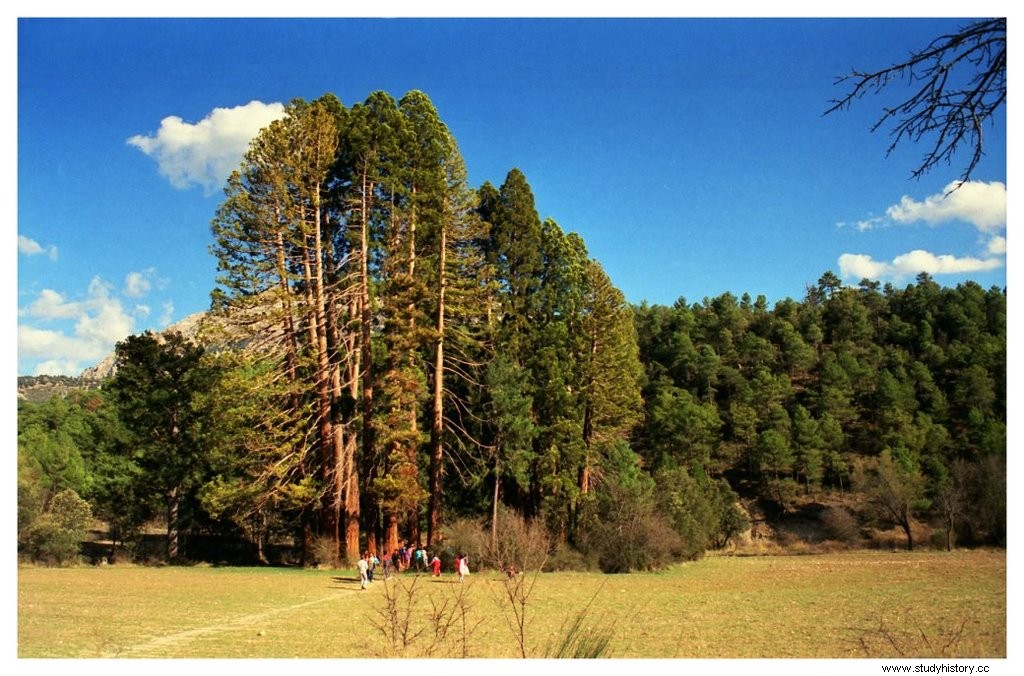The traveler has several reasons to visit Huéscar , a Granada municipality already attached to the provinces of Albacete and Jaén. One could be that an excellent segureña sheep is raised there whose chops are a delight. Another, who likes melancholy ruins and takes pleasure in contemplating the pharaonic and interrupted sine die works of the Carlos III canal, an illustrious precedent of the Tajo-Segura canal. It was conceived in the time of Felipe II, but the works were abandoned until finally Carlos III took the project seriously... to abandon it shortly after.
But perhaps the most attractive and curious reason is to find out why this small municipality declared war on Denmark in 1809. Although peace was not signed until 1981, do not be alarmed... It was a war in which not a single shot was fired and no one was injured. However, it turned out to be the longest and bloodiest war in the history of Spain; not in vain it lasted 172 years. Come on, a full-fledged war.
It all started in 1808, when French troops commanded by Napoleon invaded Spain. Our country was precisely allied with its Gallic counterpart and at odds with England at that time. But events made Spain rectify and sign peace with the English. In Denmark, which was an ally of France, a detachment of Spanish troops had previously been installed to support the Scandinavian country in its war against Sweden and serve as a containment against possible English insurgencies. The bartering of alliances forced a rapid flight on the part of the Spanish army from Denmark, aided by English ships. But 5,000 soldiers were taken prisoner by the French and Danes.
Given these events, on November 11, 1809, a Spanish military emissary arrived in Huéscar with a Royal Order from the Cortes acting on behalf of Fernando VII, the king who had been banished by Napoleon. This document called for breaking all diplomatic relations with Denmark. The City Council of the town of Granada agreed in a plenary session to declare war on Denmark in the form of a side . Such resolution established…
[…] attack the Danish forces wherever they are, avenge the insults received and not cease hostilities until a mutual court-to-court agreement and a treaty stipulate the conditions of peace.
Although in 1814 the armistice came with the withdrawal of the French troops, in Huéscar it seems that they did not know about it. And so the litigation continued until July 7, 1981... The symbolic peace treaty was signed that same date in a relaxed and friendly plenary session of the Andalusian town council. It was not necessary for the concordat to reach Danish ears, since the Scandinavian country was never aware of these curious hostilities. That was a true day of friendship from Huesca-Danish, despite the fact that the signs posted on the access roads to Huéscar warned visiting Nordics of the following:
Beware, if you are Danish, remember that you are entering enemy territory. If you decide to pass, take the consequences.
The ambassador of the Scandinavian country in Madrid, Mogens Wandel-Petersen , and the mayor of Huéscar at the time, José Pablo Serrano , in the presence of the first civil and military authorities from Granada, sealed the agreement.

The Ambassador and the Mayor
Once landed in Huéscar, the traveler can take advantage of the walk to contemplate the gigantic 75-meter-high sequoias that grow in the Losa area. . They were planted by Wellington, the English general who defeated the French in the War of Independence. Not far from Huéscar is Orce, whose Venta Micena site contains one of the most important paleontological complexes in Eurasia. In one of the archaeological sites, a fossil milk tooth of a child has been found, which is considered to be the oldest human remains in Western Europe, dating back 1.4 million years.

Collaboration with Javier Ramos from Places with History.
